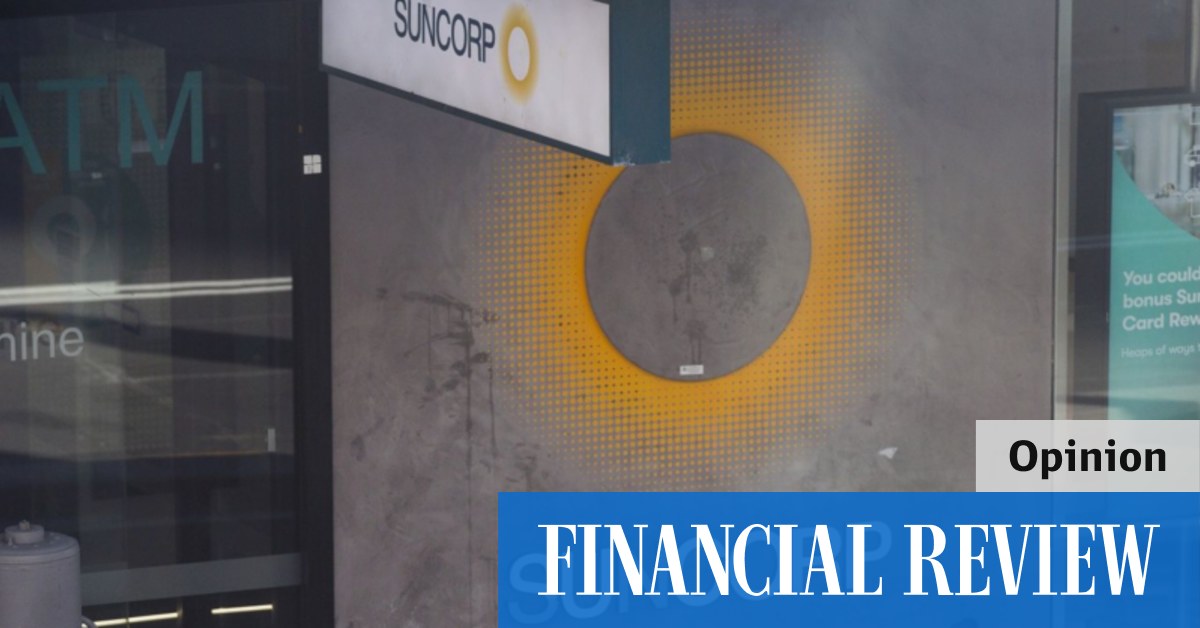As a result, van Horen only pocketed $549,000 in cash short-term incentives in 2022 (well below the potential maximum of $882,000), in addition $296,000 in deferred short-term incentives (compared with a maximum $475,000).
If van Horen had achieved his target, he would have earned $905,000 in total short-term incentives, or around 7 per cent more than the $845,000 he received.
Still, it’s unlikely that van Horen will be feeling too disgruntled. He still received total remuneration of $2.4 million in 2022, making him the third highest earner in the group after Suncorp boss Steve Johnston (who received $4.9 million) and chief information officer Adam Bennett (whose total remuneration came to $2.7 million).
What’s more, although van Horen didn’t meet his ambitious home loan growth target, Suncorp Bank did well enough to attract the interest of Melbourne-based ANZ Bank, which three weeks ago unveiled a $4.9 billion bid for the lender.
Now, it’s not all surprising that ANZ boss Shayne Elliott is interested in acquiring Suncorp Bank.
In the first place, it is primarily a home loan lender, with total housing loans of $50.3 billion as at June 2022, compared with $11.8 billion in total business loans.
What’s more, Suncorp’s home lending book has a strong geographic focus on two states where ANZ has historically been under-represented: Queensland (which accounts for around 44 per cent of its housing portfolio), and NSW (which accounts for 29 per cent).
The other attribute that ANZ finds attractive is Suncorp’s fast growth.
After years of losing market share in the lucrative home lending market, ANZ has only just reached the stage where it is growing its home lending book at the same clip as its peers – which is not that extraordinary an achievement given that Commonwealth Bank, Westpac and NAB are all growing below system at present.
Meanwhile, Suncorp’s total home loan book grew by a respectable 9.0 per cent over the year to June 2022. And in the second half of the year, Suncorp’s total home loan book grew by a blistering 6.2 per cent.
As Suncorp Group noted in its results for the year ended June 2022 “growth momentum continued to build over the year, with 1.3 times system growth recorded.
“Overall home lending grew ahead of the system in the 2022 financial year, and gained 4.8 basis points of market share against competitors.”
Still, although ANZ boss Shayne Elliott has been effusive in his praise of Suncorp Bank, he might pause to question whether this growth is sustainable longer-term, or whether it was a short-term strategy designed to make Suncorp more attractive to potential purchasers.
After all, in a fiercely competitive home loan market, rapid growth comes at a cost. And Suncorp has paid a heavy price in terms of its net interest margin – the difference between a bank’s funding costs and how much it earns on its loans.
According to Suncorp, “lending pricing” was responsible for a savage 17 basis point fall in its net interest margin in the 2022 financial year.
This drop, it said, was “primarily due to reduced margins on variable and fixed home lending and the impact of repricing existing customer loans driven by significant competition in the market”.
However, Suncorp was keen to hose down suggestions that it was using aggressive pricing to win market share, saying that it “remained competitive in pricing, without leading the market”.
In addition, Suncorp’s net interest margin fell by a further 7 basis points due to the emerging popularity of fixed rate loans, on which banks earn a lower margin. Fixed rate loans made 35 per cent of Suncorp’s home loan book in 2022, up from 25 per cent the previous year.
Still, this pressure should soon abate. Because fixed rate home loans are now more expensive than variable rate loans, fewer borrowers are choosing to lock in their rates. Fixed rate loans made up only 6 per cent of Suncorp’s new home lending in the month of June.
Suncorp’s rapid growth spurt has also left the Queensland-lender increasingly dependent on mortgage brokers.
Loans originated from the broker network accounted for 76 per cent of home loans in June 2022, a sharp increase from 67 per cent a year earlier.
In contrast, the proportion of home loans coming through Suncorp’s branch network dropped to 24 per cent in June 2022, down from 33 per cent a year earlier.
This growing dependence on broker-originated home loans means that Suncorp will continue to feel intense pressure to be market-leading both in terms of pricing, and in terms of home loan approval times.
In its latest results, Suncorp said it had “delivered a material improvement to its turnaround time”, even though its total home loan applications jumped to $23.2 billion in the 2022 financial year, from $17.8 billion the previous year.
“The median turnaround time was 11 working days for the 2022 financial year, an improvement of around 5 working days from the previous corresponding period.”
But it’s clear that Suncorp strained to achieve this result, despite simplifying its processes, and introducing more technology to boost assessor productivity.
Suncorp said: “High application volumes have led to increases in personnel costs to meet demand and market expectations around ‘Time to Yes’.
“The cost increases were partly offset by reductions in branch numbers and some third-party costs.”
Of course, ANZ is also attracted to Suncorp’s large $48.1 billion retail deposit base. The Queensland lender has $36.6 billion in very low cost at-call transaction and savings accounts.
But Suncorp’s customers are increasingly shifting their money into term deposits to take advantage of rising interest rates. Total term deposits stood at $11.5 billion at the end of June this year, up 42 per cent from a year earlier.
